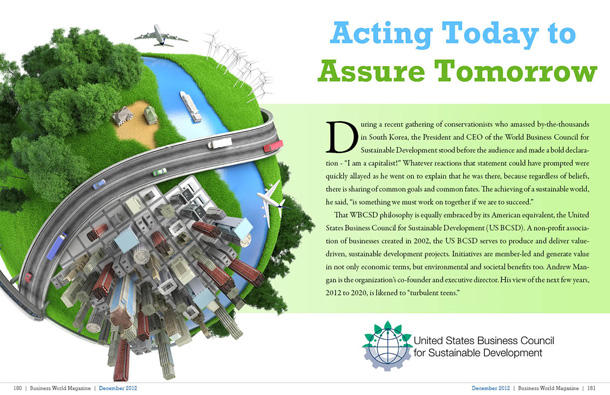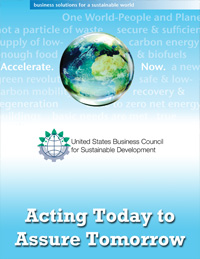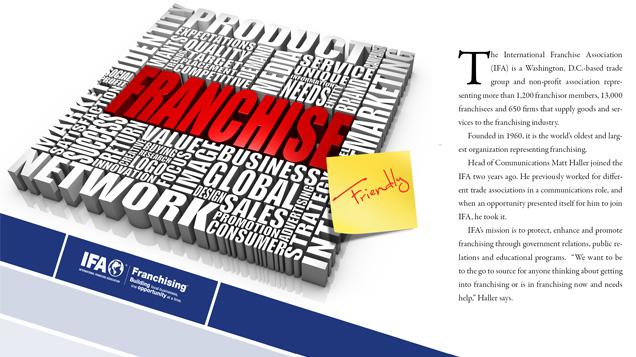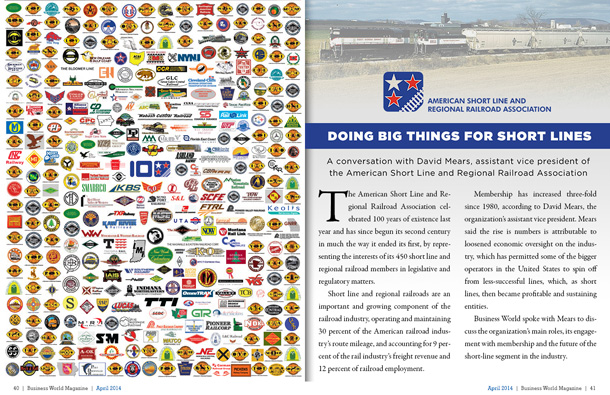

During a recent gathering of conservationists who amassed by-the-thousands in South Korea, the President and CEO of the World Business Council for Sustainable Development stood before the audience and made a bold declaration – “I am a capitalist!†Whatever reactions that statement could have prompted was quickly allayed as he went on to explain that he was there, because regardless of beliefs, there is sharing of common goals and common fates. The achieving of a sustainable world, he said, “is something we must work on together if we are to succeed.â€
That WBCSD philosophy is equally embraced by its American equivalent, the United States Business Council for Sustainable Development (US BCSD). A non-profit association of businesses created in 2002, the US BCSD serves to produce and deliver value-driven, sustainable development projects. Initiatives are member-led and generate value in not only economic terms, but environmental and societal benefits too. Andrew Mangan is the organization’s co-founder and executive director. His view of the next few years, 2012 to 2020, is likened to “turbulent teens.â€
Fortunately, he says there is increased recognition among business leaders that NOW is the moment to start thinking and working collaboratively to successfully address massive changes on the not-so-distant horizon. Those changes include: billions more people on earth, and many with increased buying power, flowing into already burgeoning cities that will be impacted by added strain; coping with and confronting increasingly unpredictable issues arising from climate change and its global effects; and acknowledgement, that when increased demand combines with potential shortages, it amounts to greater competition for resources worldwide. To tackle these challenges, people are starting to work together in new and different ways. To move beyond the 21st Century, Mangan says new forms of collaboration are the key, and it is in this capacity the US BCSD performs a key role.
Some successful techniques they employ include developing consensus programs and systems games that increase understanding of complex challenges ahead. They produce pilot projects leading to scaling-up solutions, cross-industry optimization strategies, triple-bottom-line metrics for heightened awareness and advocate creation of on-line marketplaces. They are engaged in a variety of activities, but these efforts are compartmentalized into four primary focus areas – ecosystems, energy, materials and water. This compartmentalization directly corresponds to members’ sustainability goals, industry drivers, societal interests and environmental commitments. Initiatives are empowered by US BCSD’s standard collaborative methodology and align with the WBCSD strategy known as Vision 2050, a proposition for a world in which nine billion people can live well, and within, the planet’s resources by 2050.
Ecosystems
Without the availability of ecosystem services such as biomass, water supply, climate regulation, and flood prevention, the productivity of most global supply chains would be impaired. Too few businesses have analyzed their dependence upon ecosystems or the potential costs of losing these services. That’s due to ecosystem services being what Mangan describes as “externalities†– outside the market and off the books, out of sight and out of mind. Tools and techniques to identify business opportunities related to ecosystem services can help companies generate business value and realize their corporate sustainability goals.
One example involves a US BCSD Member and cement manufacturer (Essroc), who recently developed a pilot project within the Delaware River Watershed; a plan to restore ecosystem services related to water quality through stream restoration, reforestation and other ecological restoration techniques. Once complete, a number of ecosystem valuation techniques will be applied to capture the full value of the ecosystem goods and services provided through the project. Mangan says there is potential for expanding this same project model elsewhere.
Energy
Buildings worldwide account for an astounding 40% of global energy consumption. Companies are faced with the challenge of reducing energy consumption within their communities. The most direct way to cut consumption is to reduce energy demand by improving energy efficiency of existing buildings, related equipment, operating processes and practices. In terms of commercial and industrial operations, the challenge is to create pathways to invest in efficiency improvements in addition to approaches that may have a faster rate of return on investment.
US BCSD member companies have been exploring the application of Property Assessed Clean Energy (PACE) financing as one solution. PACE is an innovative way to pay for upgrades to existing commercial, residential and industrial structures that will result in significantly reduced operating costs and enhanced property values. The program allows property owners to finance energy-efficiency and renewable energy improvements through loans that can be amortized for up to 20 years. The loans are secured by a property lien and repaid by the owner as an assessment on the property tax bill. The annual savings achieved from upgrades are expected to exceed the annual amount of the assessments.
Active PACE projects have been recently announced in Florida and California. At present, there are 27 other states, as well as the District of Columbia, who have adopted comprehensive PACE-enabling legislation. Programs are underway in many of these jurisdictions.
Materials
According to the U.S. Environmental Protection Agency, industrial facilities in America generate and manage 7.6 billion tons of nonhazardous industrial waste in land disposal units annually. Landfill-free programs are becoming a cornerstone of corporate sustainability strategies across industries as well as large and small organizations.
The US BCSD helps its members achieve materials-related goals through By-Product Synergy (BPS), a collaborative project methodology that breaks down barriers to cross industry communication by fostering dialogue and working across groups to identify supply chain localization and waste-minimization opportunities. BPS encourages companies to recognize that one operation’s waste can be another’s raw material, generating new revenue, cost savings for disposal and virgin resource use, energy conservation, and emissions reductions. Mangan says it also sets up a convenient communication system to link companies with one another to find the synergies.
In the US, manufacturers devalue millions of dollars of inventory each year—even the leanest manufacturing process does not eliminate the problems of yield-loss or occasional off-specification products. Instead of the total loss and disposal of these resources, by-product synergy solutions can identify new uses and naturally lead to business savings in the six-figure range or more.
This project methodology has expanded around the world. In May 2012, for example, the US BCSD and the China Business Council for Sustainable Development initiated a BPS project in Hebei Province in northeast China (a partnership structured through the US-China Strategic Economic Dialogue’s EcoPartnership program). The Hebei BPS project is modeled after the US BCSD’s network of successful projects in regions across the US and will address several objectives of China’s 12th Five Year Plan which includes: a 16% reduction in energy use per unit of GDP; a 17% reduction of CO2 emissions per unit of GDP; and an 8% absolute reduction in sulfur dioxide and organic water pollutants. Some three to four dozen Chinese companies will be invited to join this network and are expected to produce synergies valued at US $5 million-$10 million in new revenues, savings and investments in 2013.
Water
Implementation of sustainable water management strategies is of increasing importance to US businesses, especially as water resources that are significant supply or discharge points for their facilities become stressed. Water management is a local issue, defined by the characteristics of a watershed and its use – encompassing business, agriculture, livestock, municipal, residential, shipping/transport, and recreational users. The US BCSD has aimed its collaborative methodology at bringing watershed users together to develop sustainable water management practices that foster mutually beneficial solutions rather than competitive tensions.
In Southern Louisiana, The US BCSD’s Water Synergy Project has brought together 24 organizations representing multiple industries to work together to address issues in five areas: Wetlands, Numeric Nutrient Criteria Issues, Switching Water Supplies, Water System Collaboration, and Alternative Levee Materials. Project participants have stressed the importance for Louisiana stakeholders to work together proactively to establish baseline nutrient contributions and work with Louisiana Dept. of Environmental Quality on establishing numeric nutrient criteria; coastal resiliency incentives for assimilated and constructed wetlands to handle storm water and process water; and potential areas in Louisiana for water supply collaboration. The success of this project in the Louisiana region could easily be replicated in other watersheds around the US, which each face their own unique issues.
Going Forward
In June 2012, US BCSD and WBCSD members, government, academic, NGO, and other thought-leaders in sustainability convened at Yale University’s Center for Business and the Environment. The goal was to define pathways to achieving a sustainable world by 2050. The purposes are clear while plans-of-solution, not so, but as Mangan says, where there is resolve and willingness to work together, solutions can be more recognized. And with having so many talking together come increased opportunities to work together. These processes will continue February 6-7, 2013, with a meeting in Austin, Texas. All interested business leaders are encouraged to participate.
Meanwhile, the US BCSD will continue working on partnerships, synergies and projects that combine their regional implementation strategies with the WBCSD’s global business solutions, augmented by the framework of the WBCSD’s Vision 2050 sustainability pathway.
“We will continue seeking out ways of achieving the sustainable development ‘must haves’ by 2020, just seven years from now,†says Mangan.  “We will continue building bridges between companies, sectors and with the public to establish alignment on this path.â€
He encourages business leaders to get involved and share input.







